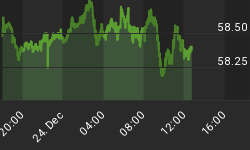Today's existing home sales report was down another 4.9% to an annual rate of 4.82 million units, the lowest in nearly a year. And this, remember, is in the sixth year of a recovery with reported unemployment below 6% and the Fed preparing to raise interest rates to head off incipient overheating.

Mortgage rates can't be the problem, since they're down lately to less than 4% on a 30-year fixed loan. That's amazingly cheap, especially to people of a certain age who remember when 7% was a really good deal. In normal times a rate this low would set off a buying frenzy. This year it can't even keep demand steady.

The real problem has nothing to do with housing per se and everything to do with that fraudulently false unemployment number. The truth of the labor market is that 1) most of the new jobs being created are either part-time or low-wage or both and therefore can't support a mortgage, and 2) most of the improvement in unemployment comes from people dropping out of the workfore and no longer being counted as unemployed. These people also generally can't get or don't want mortgages. Meanwhile, the relative handful of Americans who do qualify for loans seem to be choosing cars and college degrees over houses.

And the US, remember, is the global success story. We monetized our debt first and fastest and are now reaping the rewards. But with the rest of the world flat-lining or worse (result: falling profits for US multinationals), the oil sector contracting (result: layoffs in once-booming Texas and the Dakotas), and now housing a net negative with no recovery in sight (result: layoffs of highly-paid appraisers and mortgage bankers), the odds of the Fed raising rates anytime soon are becoming more and more remote.
Much more likely is the US joining the race to negative rates. Somewhere down there must be a mortgage rate (1%...-1%?) that gets us buying again.
















